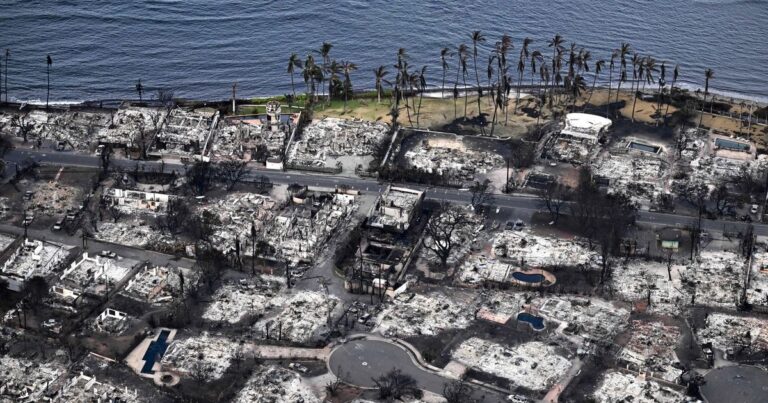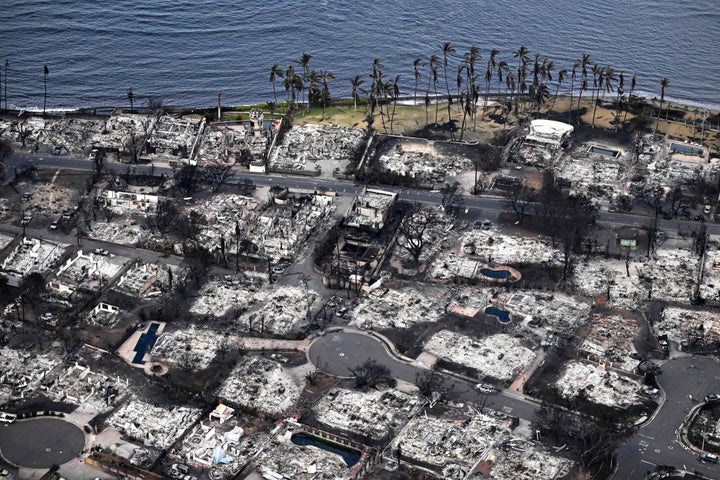
[ad_1]
Officials announced Thursday that the death toll from wildfires on Maui now stands at 53, making it one of the deadliest blazes in the last century.
The new fatality count is a significant jump from the 36 confirmed dead on Wednesday, a day after the fire ignited, sending the historic Hawaiian tourist destination town of Lahaina up in flames. The death toll has increased as rescuers have been able to reach parts of the island previously inaccessible due to fires and other obstructions.

PATRICK T. FALLON/Getty Images
The new death toll approaches the fatality count from the California’s 2018 Camp Fire, which claimed 85 lives and ranks as the deadliest wildfire in recent history.
“We are grieving with each other during this inconsolable time,” Maui County Mayor Richard Bissen Jr. said in a recorded statement early Thursday. “In the days ahead, we will be stronger as a ‘kaiaulu,’ or community, as we rebuild with resilience and aloha.”
The series of wildfires, fueled by drought and winds from the passing Hurricane Dora, took the island by surprise and burned more than 270 buildings to the ground in Lahaina, a bustling community on the island’s west side.
The community was nearly wiped out, leaving a lighthouse and the country’s oldest banyan tree among the few landmarks still standing.
“Banyan Tree in Lahaina smoldering at the base, but still standing. Just about the only thing left, other than the Lighthouse,” Sen. Brian Schatz (D-Hawaii) wrote on Twitter on Thursday, sharing videos of the decimated town.
President Joe Biden approved a disaster declaration for the island and expanded federal aid earlier on Thursday.
“Our prayers are with the people of Hawaii, but not just our prayers,” he said. “Every asset we have will be available to them.”
The precise cause of the fires remains unknown, but experts say climate change is expected to make such disasters only more intense and more frequent.
“It’s leading to these unpredictable or unforeseen combinations that we’re seeing right now and that are fueling this extreme fire weather,” Kelsey Copes-Gerbitz, a researcher on the University of British Columbia’s faculty of forestry, told The Associated Press, referring to the dry vegetation combined with strong hurricane winds.
[ad_2]